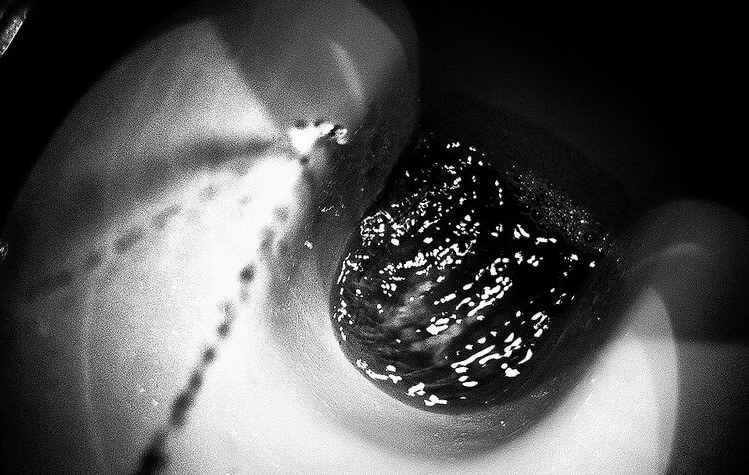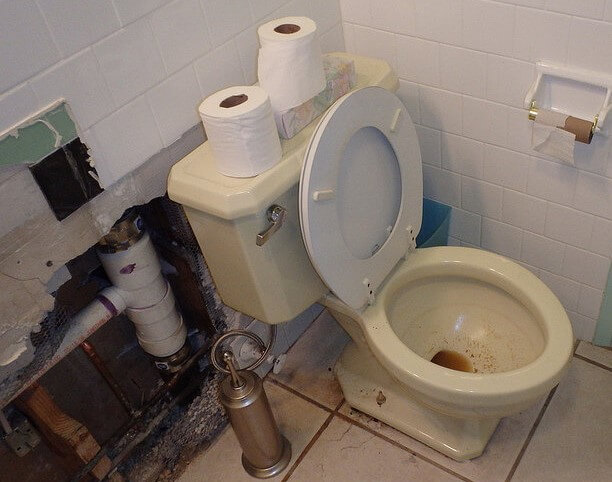
A clogged toilet is an unpleasant, but not uncommon, problem. We’re all familiar with the dreaded signs – the slow drain, the rising water level, and the mess that won’t flush away. If you’re dealing with a clog in your toilet, there are several things you can do to clear the problem. Try these steps to get things flowing again.
Prevent an Overflow
While working on your toilet, it’s important to keep an eye out for rising waters that may get too high. You can prevent an overflowing toilet in two ways. Be prepared to implement these solutions as soon as you notice the water rising higher than normal. If you act quickly, you can prevent a septic disaster and keep water where you want it – in the bowl.
When waters are reaching dangerous levels, you can:
- Remove the lid from the toilet tank, reach in, and hold down the toilet flapper. This will stop fresh water from feeding into the toilet.
- Turn off water to the toilet at the source. The water supply can be found behind the toilet.
You don’t need to implement these solutions if the water isn’t in danger of overflowing. If water can still drain around the clog, you may find that you can flush safely without having to stop the flow of fresh water to the toilet.
Dislodge the Clog
There are several things you can do to try and dislodge the clog before you reach for the plunger. Start with a combination of baking soda and vinegar. About one cup of baking soda and two cups of vinegar will do the trick for most clogs. Pour this in and allow it to sit for 30 minutes. The fizzing action of the vinegar and baking soda can help dissipate the clog for you.
If the baking soda and vinegar trick doesn’t work, pour about half a cup of dish soap into the toilet and follow this with a bucket of hot water. Pour the water into the toilet from about waist height. The soap offers lubrication to help the clog slide through the pipes, while the hot water provides a gentle push of force to get things moving.
Pick the Right Plunger
It’s important to choose the right plunger for the job. When you’re working with a toilet, you want to use a plunger with a flange. The flange is the piece that extends down from the rim of the plunger. This type of tool is also known as a funnel-cup plunger. A standard plunger lacks this extra part at the bottom. Regular plungers may work for a sink, but the flange on a funnel-cup plunger helps form a stronger seal in the uniquely-shaped bowl of a toilet.
Plunge Properly
The toilet bowl should be halfway full while you’re plunging. If it’s too full, remove half of the water. You can remove the water with an empty water bottle. Squeeze the bottle, place the open end in the water, and let go, so the bottle pulls the water inside. Wear rubber gloves while doing this to protect your hands from any splashing.

If the toilet is too empty, add water as needed so the plunger is submerged while you’re working. When the bowl is ready, follow these steps to successfully loosen the clog.
- Warm the plunger by holding it under hot running water. This will soften the rubber and help you get a stronger seal.
- Position the plunger in the toilet bowl so the flange sits in the drain opening. The plunger should cover the opening completely and provide a strong seal.
- Push down with the plunger and pull up strongly, creating several shallow, powerful thrusts.
After plunging for a few moments, remove the plunger to see if water flows down the toilet. If the water is still shallow, you may need to flush the toilet or otherwise add more water to the tank to see if the clog Is still obstructing the flow.
Use an Auger
If your plunger isn’t doing the job, you may want to try an auger to clear the clog in your toilet. An auger is a long, coiled cable attached to a hand crank, which you can insert in the toilet to loosen clogs. To use an auger:
- Insert the tip into the drain of the toilet.
- Crank the auger handle in one direction until it no longer moves.
- Retract the auger, pulling it out gently.
- The auger may either loosen the clog, so it can flush away easily, or catch the clog and pull it back up.
If these methods don’t work, you may need to call a plumber for professional help with your clog. While most clogged toilets can be with these DIY methods, you should seek professional assistance for those issues that are simply too difficult for your own tools and at-home methods. With the right help, you can get your toilet flowing again in no time.
